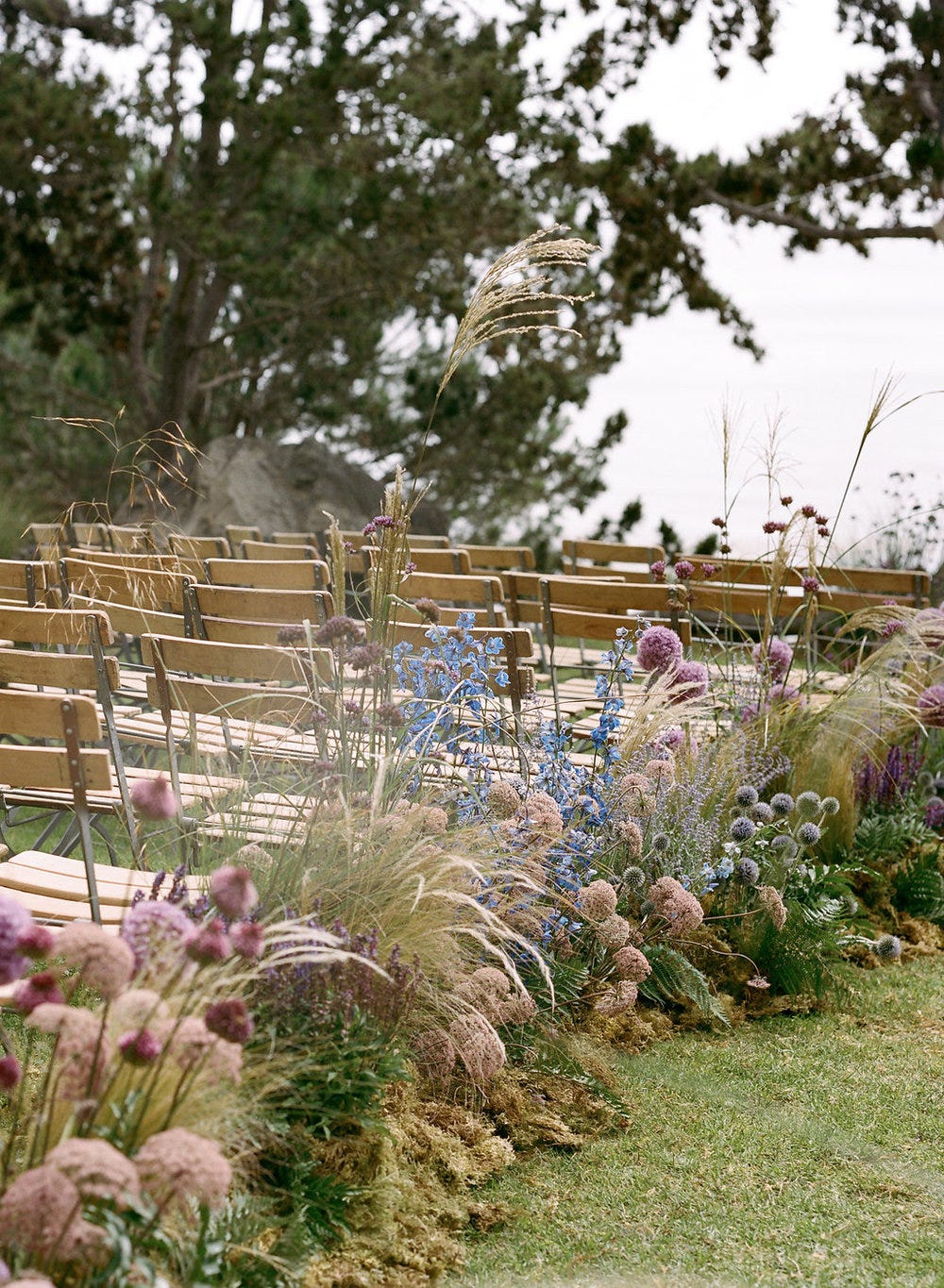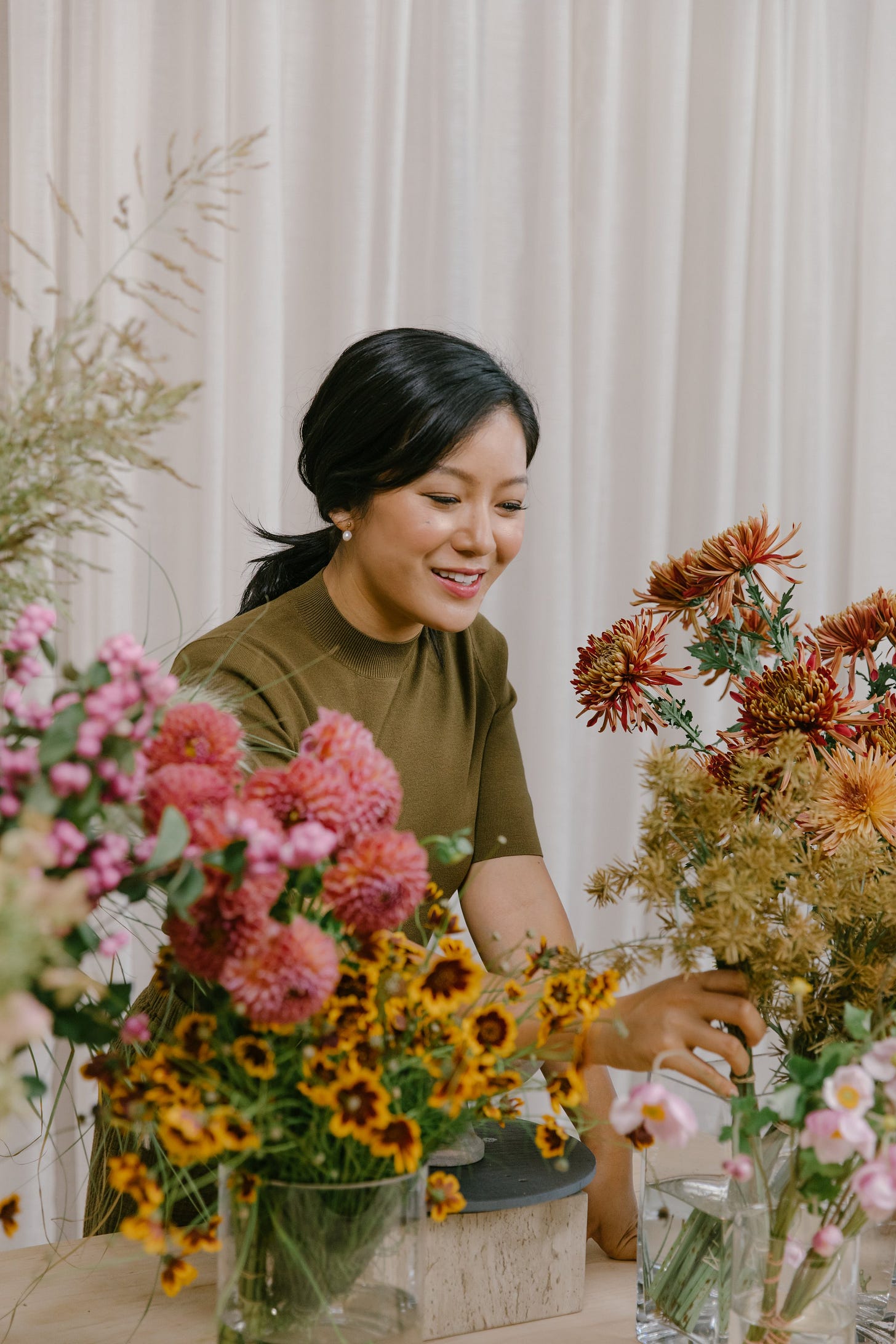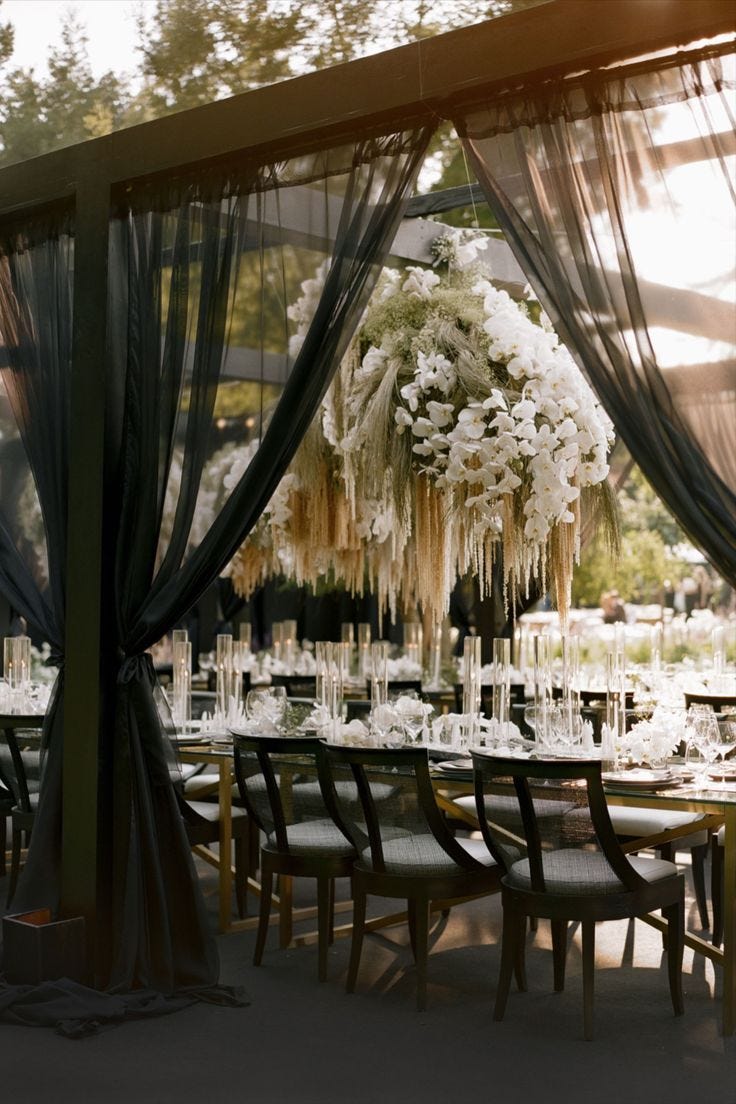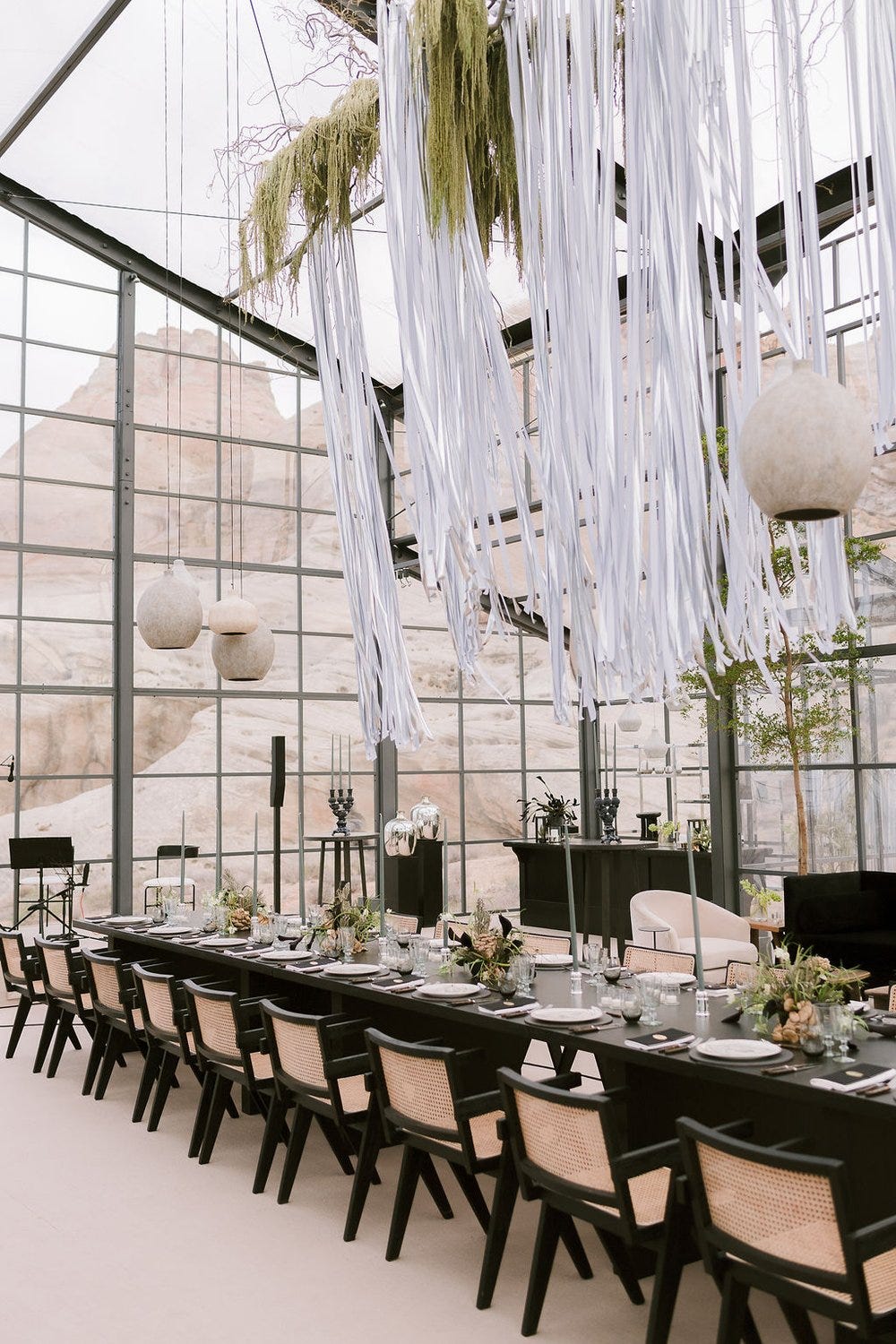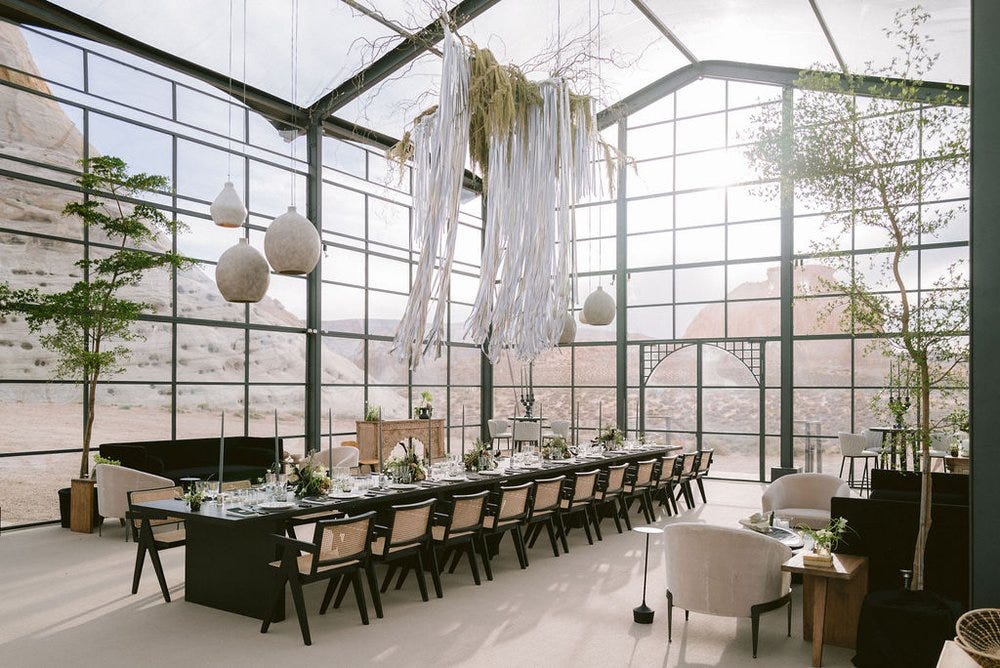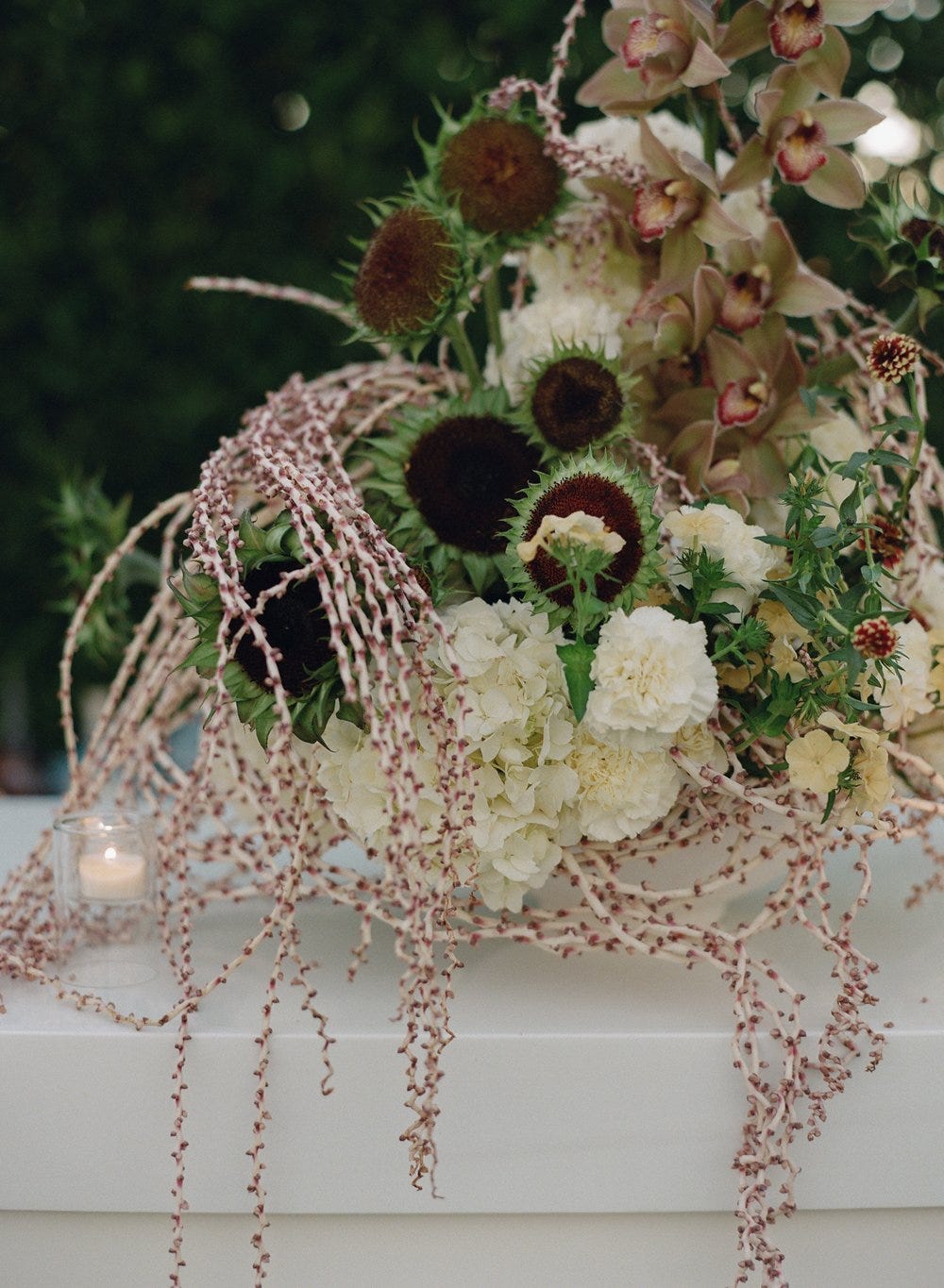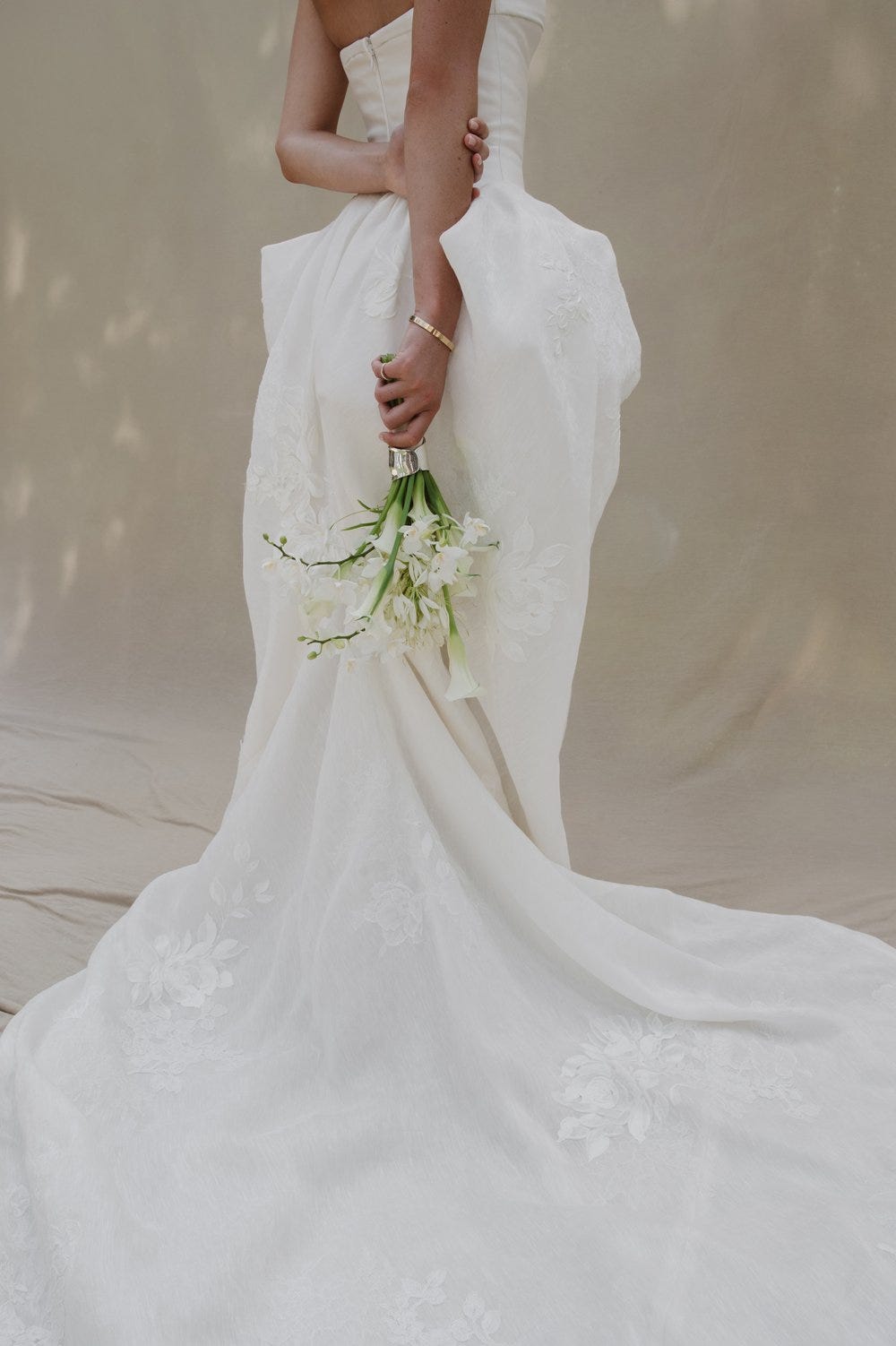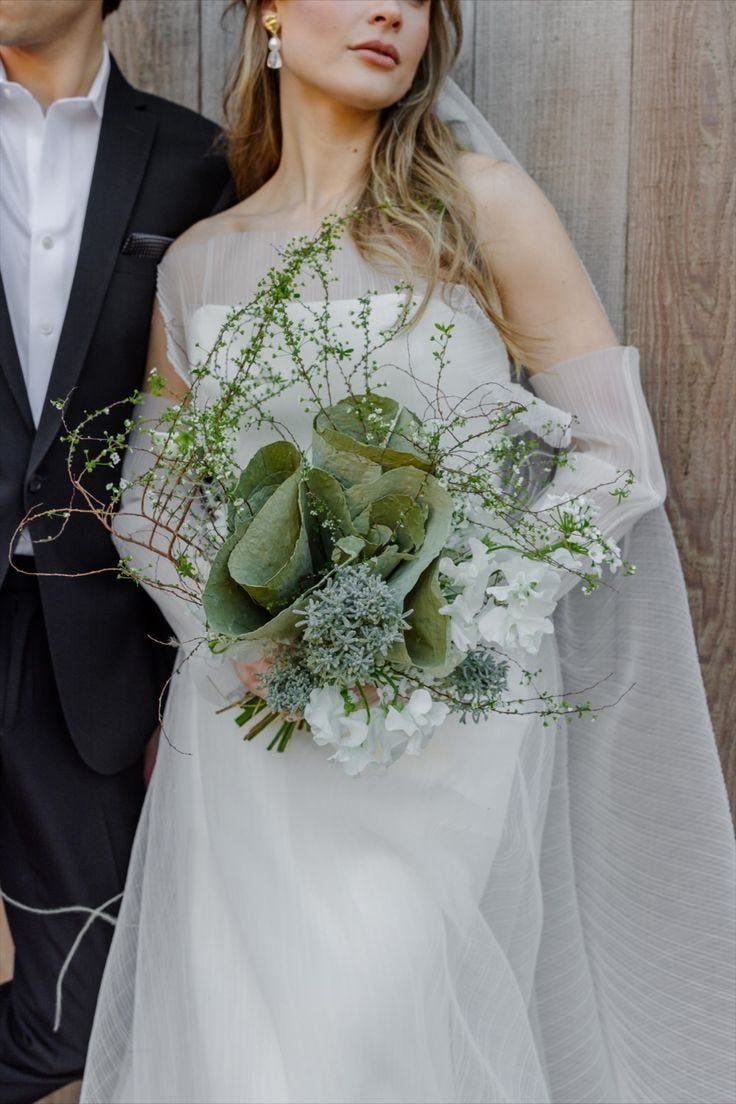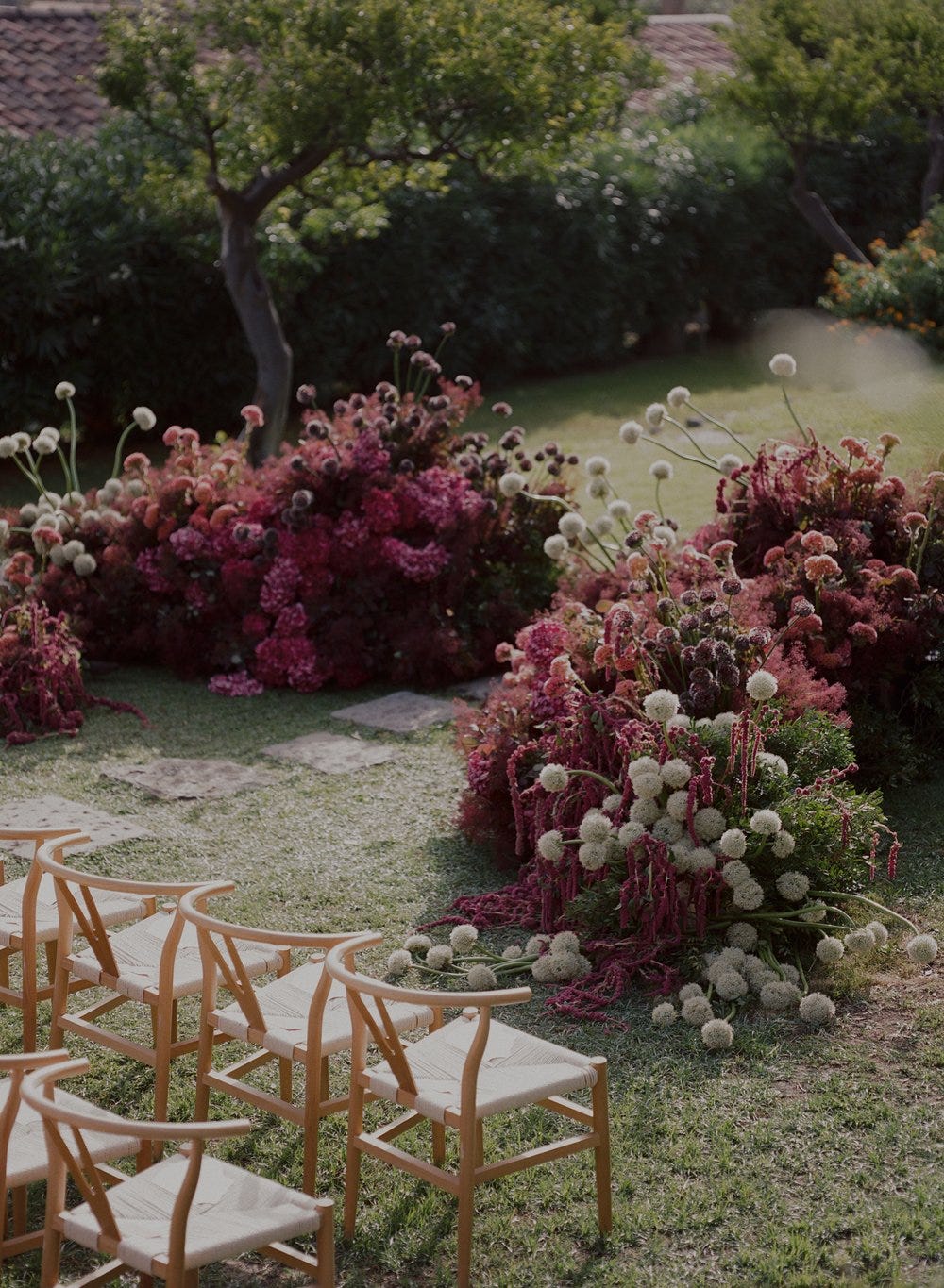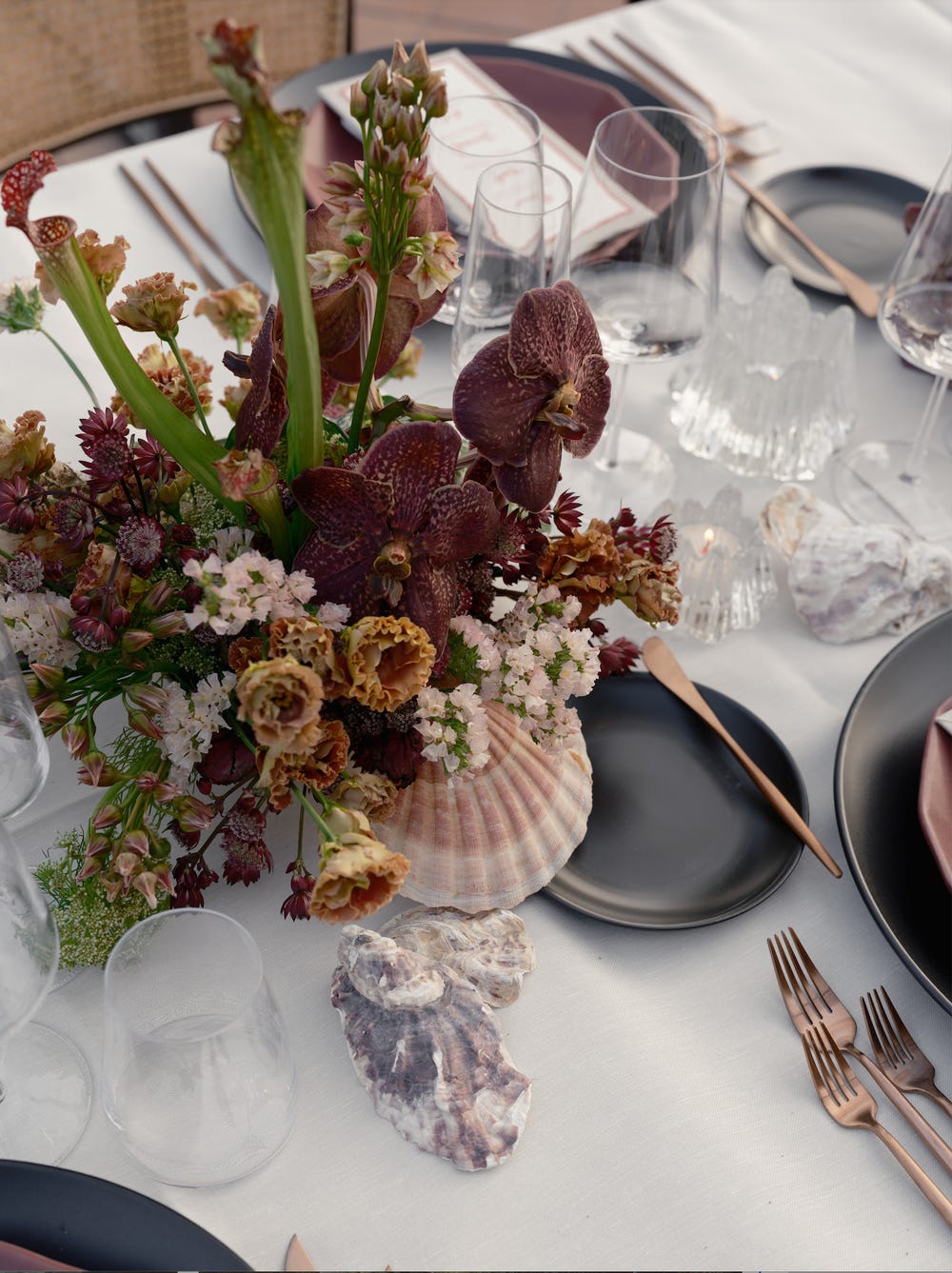From Field to Form: Inside the Creative Mind of Floral Designer Studio Mondine
Where Amanda Luu started her career, where she finds creative inspiration, her advice for other floral designers, and more.
Editor’s Note: Looking for talented creatives to bring your event dreams to life? Our Matchmaker Concierge service personally matches couples with the most inspiring vendors in the industry. Get started here.
Few floral designers move us the way Studio Mondine does. Rooted in fine art, design research, and the ephemeral nature of events, their work feels like poetry in bloom—at once deeply intentional and instinctively wild. We’ve long admired the studio’s reverence for the natural world and their ability to create florals that feel both grounded and transcendent.
In this exclusive interview, we speak with Amanda Luu, the principal of Studio Mondine, about her creative process, commitment to sustainability, and the way her team weaves flower traditions with site-specific storytelling. As our climate continues to shift, their work is a poignant reminder of the fragile, fleeting beauty we must both cherish and protect.
Pull up a chair. This one’s special.
Was your profession always in floral design? How did you decide to start a career in this industry?
My journey into floral design wasn't linear. In school, I studied environmental economics and researched organizational behavior. That path landed me a job at a marketing agency, where I worked my butt off — long hours, laughable pay — but I picked up incredible skills that still serve me today: managing up, communicating value, and telling the story behind the numbers on a spreadsheet.
Off-duty, I always felt a pull toward nature and working with my hands. After too many afternoons staring out an office tower window, I reached a breaking point and decided to take a chance on a creative life. I turned toward my passion for flowers and plants without much of a plan, taking each step forward by intuition. I was also 23, and just brave enough to not know better.
We’re such huge fans of your work. Where do you find inspiration and how would you describe the Studio Mondine style?
Thank you for your kind words. It’s hard for a studio practice not to take the shape of its founder’s interests, so I’ll be candid: right now, I’m deeply interested in the Second Bay Tradition — a woodsy, regionally rooted architectural style that emerged from the SF Bay Area before midcentury. I’ve also been completely captivated by Hermès and their radical business proposition to scale hand craftsmanship (this four-hour podcast broke the frame for me!), and I’m obsessed with all things niche fragrance. When I lived closer, Ministry of Scent was a near-daily stop-in.
This spring, I flew into Milan ahead of a site visit and caught the tail end of Design Week. Steffany of Vy Voi shared her insider’s list of must-see shows, and I was lucky to reunite with producer Valentina Monchieri and event designer Candice Edinger as we crisscrossed the city on foot. Inspiration is everywhere, but the alchemy is held within your people.
How do you handle sustainability in floral design—do you have eco-friendly practices?
Sustainability is at the core of our practice. We’ve undertaken comprehensive assessments of our environmental impact — from sourcing to minimizing waste and eliminating the use of floral foam. We compost floral waste whenever possible and repurpose materials to extend their lifecycle. For our team, there’s no ambiguity: environmental justice is social justice.
What are your thoughts on incorporating trends into weddings? What are some key floral trends you predict for 2025 and 2026 weddings?
We’re a client-driven practice, so yes, we keep a close eye on trends. And if it were up to just me, my dream day would be getting lost in an archive to research, synthesize, and dream for our clients.
Less a trend and more a worldview: our clients are asking for wedding receptions that feel like hospitality builds (think your favorite boutique hotel), and ceremonies that lean nostalgic. There’s a tension that holds the day together — between the familiar and the traditional, the personal and the contemporary.
Any advice for other floral designers on how to price their services?
Here’s a new perspective I’ve developed, informed by my ikebana studies with Margaret Kurosaki.
Keep reading with a 7-day free trial
Subscribe to Behind the Veil to keep reading this post and get 7 days of free access to the full post archives.



